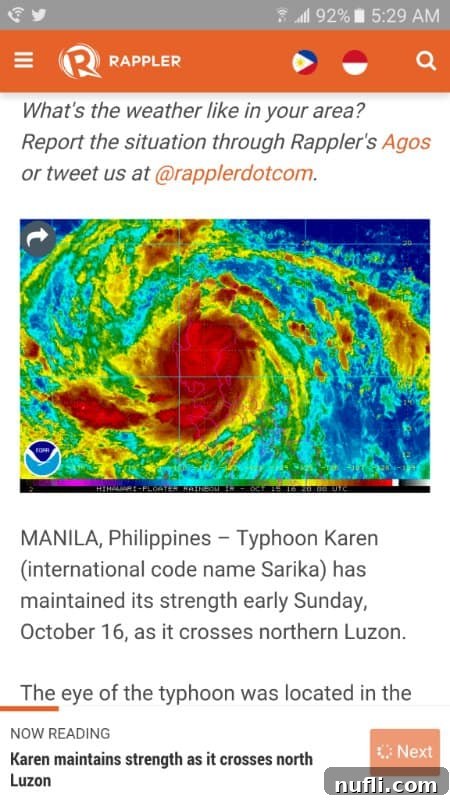Travel is an adventure, an intricate tapestry woven with unexpected moments, delightful discoveries, and sometimes, unforeseen challenges. One of the most profound lessons any traveler learns is the necessity of faith in the journey itself, a quiet hope that things will unfold as they should, even when the path veers off course. This profound sense of trusting the unknown was precisely what defined my recent experience in Manila, Philippines, when what began as an exciting conference trip quickly transformed into a firsthand encounter with the raw power of nature: Typhoon Karen, also known locally as Sarika, bearing down on the archipelago.
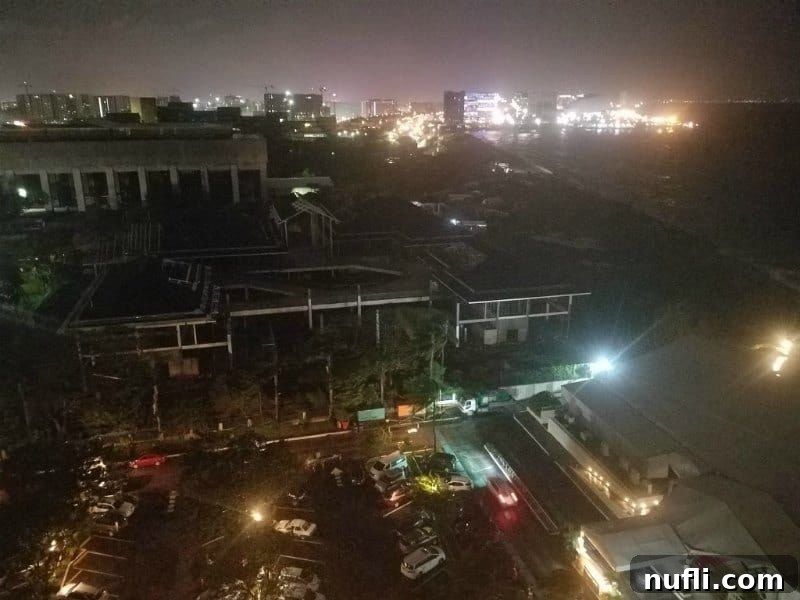
Quick Guide: Navigating Unexpected Travel Hurdles
Planning a trip to the Philippines? Here are some top resources for smooth travels, even when the unexpected happens:
- 🏨 Hotels and Vacation Rentals: Find safe and comfortable accommodations.
- 📍 Local Tours and Experiences: Discover activities that can be flexible with weather changes.
Experiencing Typhoon Karen in the Philippines: A First-Hand Account
Having never faced a typhoon before, my understanding of what was coming was purely theoretical. My mind instantly jumped to the hurricane preparations I’d experienced years ago while living in Orlando during college—a distant memory I won’t timestamp too precisely. I imagined similar routines: stocking up on supplies, battening down the hatches, and waiting it out. However, the reality of a typhoon in a bustling metropolis like Manila, halfway across the globe from my comfort zone, proved to be an entirely different beast.
My visit to the Philippines was for the TBEX Asia Pacific conference, an exciting opportunity where I was scheduled to speak on optimizing the conference experience. The irony wasn’t lost on me: here I was, imparting travel wisdom, only to find myself caught in a situation that tested my own adaptability. The news of Typhoon Karen’s approach hit unexpectedly, shifting my focus from conference agendas to urgent weather updates. My phone quickly became an extension of my anxiety, social media transforming into my primary source of real-time information. Hashtags like #KarenPH and #Sarita became constant searches on Twitter and Facebook, a digital lifeline connecting me to the unfolding drama.
One immediate realization was the glaring inadequacy of my Philippine geography knowledge. While I could vaguely pinpoint Manila on a map, the myriad of towns and provinces mentioned in the storm’s projected path were complete unknowns. Google Maps became an essential tool, allowing me to quickly orient myself, understand the relative distances, and gauge the potential impact on Metro Manila. This digital mapping exercise brought home the practical challenges of navigating an unfamiliar country during a natural disaster.
Local Insights and Unexpected Preparations
Saturday night was a restless blur of phone checks, updates to concerned loved ones back home, and a persistent attempt to ascertain the severity of the situation. I approached my shuttle driver, asking if I should be worried. His response was a nonchalant shrug, “It is what it is,” he simply stated. This stoic acceptance, a blend of practicality and fatalism, was a common thread among the locals, a stark contrast to my own mounting apprehension.
Another fascinating cultural insight came from one of our guides. She recounted a tradition observed that Saturday morning: an offering of eggs at a local church. This ancient practice, where eggs are brought along with prayer requests to the nuns, is believed to help ward off storms or lessen their impact. It was a poignant reminder of the cultural tapestry of the Philippines, where spirituality and everyday life intertwine, even in the face of a looming typhoon. These local perspectives helped contextualize the situation, offering a glimpse into how a community with a long history of enduring such storms copes.
The Eye of the Storm: A Night in Manila
Thankfully, a healthy dose of jet lag meant I managed to get some decent sleep. I was in bed by 8 PM, determined to bank as much rest as possible. However, around 2 AM, the tranquility was shattered by the distinct, mournful howl of the wind outside my hotel room window. It was an unsettling sound, a powerful force making its presence known. I instinctively reached for my phone, initiating a Facebook Live session to share the unfolding situation. The immediate connection with friends and followers from across the world, their kind words and messages of support, was incredibly comforting. Even thousands of miles away, the digital bridge made me feel less isolated, a testament to the power of community in unexpected circumstances.
After a few more hours of fitful sleep, the storm intensified, rousing me again around 6 AM. By this point, the wind was relentless, and the rain had begun in earnest, lashing sideways against the glass. It was a spectacle of nature’s fury, both terrifying and mesmerizing. With a mug of chai tea in hand, I settled in to watch the storm unfold. During another Facebook Live, I recounted the bizarre sight of a running race still taking place amidst the tempest. It was a truly surreal moment, prompting me to question what was riskier: the runners braving the storm’s elements or navigating the notoriously chaotic Manila traffic, even on a supposedly quiet storm morning.
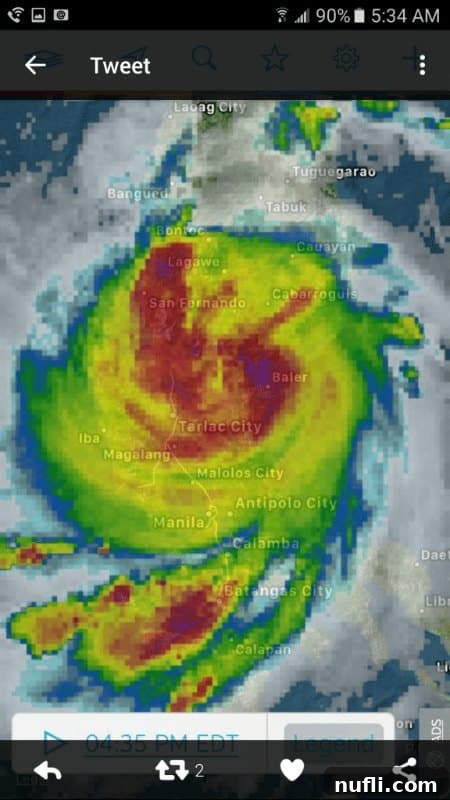
Manila’s traffic is legendary—a labyrinthine dance of vehicles where a short 15-minute journey can easily stretch into three hours. Witnessing runners weaving between cars on a main road during a typhoon added another layer to the city’s unique charm and chaos. It highlighted the resilience and, at times, the perceived invincibility of its residents.
The Calm After the Storm: Manila’s Resilience
Thankfully, by early morning, relief washed over us as news broke that Typhoon Karen had made landfall north of Manila. For the metro area, it was categorized as a Category 2 storm, meaning its most destructive core had bypassed the capital. As I ventured out later, the signs of its passage were surprisingly minimal. Roads were not flooded, and while there was some wind damage, it wasn’t extensive. The city seemed to exhale a collective sigh of relief, quickly resuming its usual vibrant rhythm.
One observation that particularly piqued my interest was Manila’s unique preparation for high winds: the folding of billboards. These colossal advertising structures, ubiquitous in any major city, are meticulously brought together almost like massive curtains and lowered to protect them from the storm’s destructive force. I had never encountered such a system before, a testament to the city’s ingenuity and adaptation to its frequent encounters with tropical cyclones.
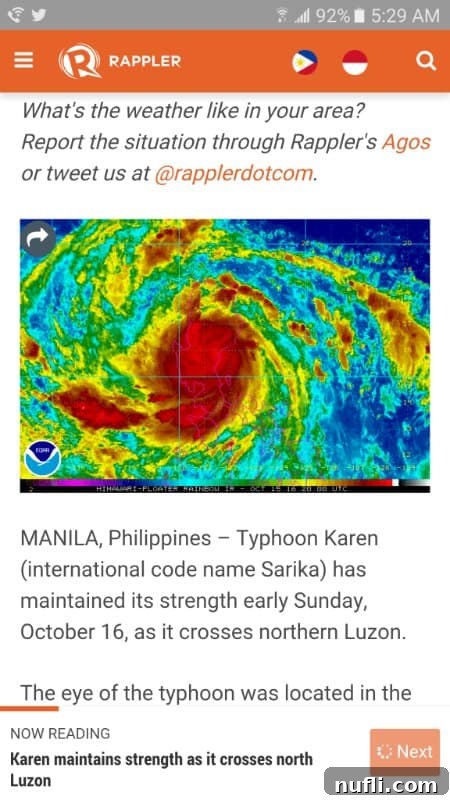
The Looming Threat of Super Typhoon Haima
Just as Manila was recovering from Karen, the radar screens began to flicker with the ominous signs of a second storm, yet to fully enter the Philippine monitoring system. This new threat, named Haima, immediately sparked a fresh wave of concern. Social media posts, particularly those from meteorology accounts, were nerve-wracking, indicating that Haima had the potential to escalate into a “super typhoon.” The very term sends shivers down one’s spine. A Category 2 storm like Karen was challenging enough; the thought of experiencing something that earns the title of a “superstorm” filled me with a deep sense of unease. I honestly wasn’t sure I wanted to Google the full implications of what a “super typhoon” entails, preferring to remain in blissful ignorance, at least for a little while longer.
My travel plans, however, had to proceed. Monday morning, I was scheduled to fly with a group of writers to Palawan, one of the Philippines’ most beautiful islands, renowned for its pristine beaches and stunning limestone karsts. My fervent hope, shared by my fellow travelers, was for clear skies and an end to the tumultuous weather. The experience with Typhoon Karen served as a stark reminder of travel’s inherent unpredictability, yet also highlighted the incredible resilience of both nature and the human spirit.
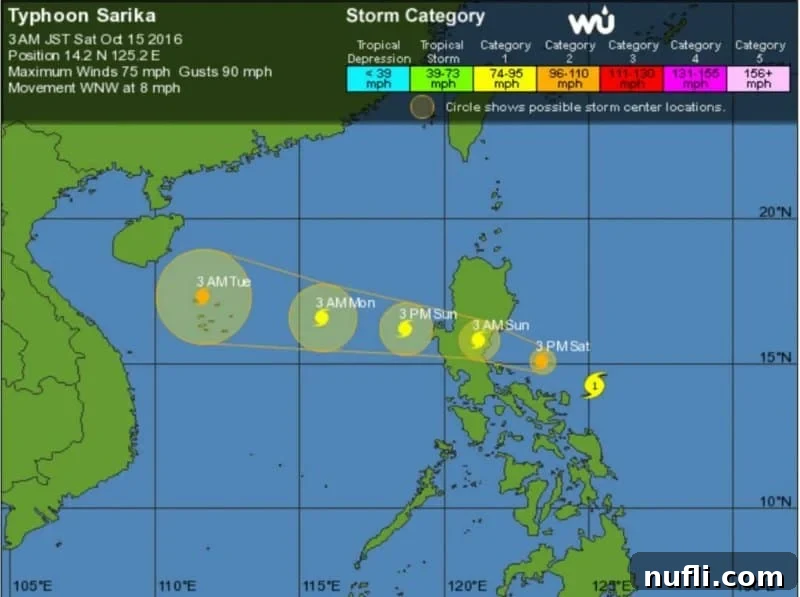
Essential Travel Tips for Typhoon Season in the Philippines
Experiencing Typhoon Karen firsthand was a powerful lesson in preparing for the unexpected. For those planning a trip to the Philippines, especially during typhoon season (roughly June to November), here are some crucial tips to ensure a safer and more enjoyable journey:
- Monitor Weather Advisories Diligently: Before and during your trip, regularly check updates from reputable sources like PAGASA (Philippine Atmospheric, Geophysical and Astronomical Services Administration) and international weather services. Stay informed about storm paths and intensity.
- Consider Travel Insurance: Comprehensive travel insurance that covers trip cancellations, delays, and medical emergencies due to natural disasters is invaluable. Read the fine print to understand what is covered.
- Maintain Flexible Bookings: Whenever possible, opt for flights and accommodations with flexible cancellation or rebooking policies. This provides peace of mind if your plans need to change suddenly due to weather.
- Pack Smart: Always include essential waterproof gear, like a reliable raincoat and waterproof bags for electronics and important documents. An emergency kit with basic first aid, essential medications, and a power bank for your phone is also advisable.
- Stay Connected: Purchase a local SIM card upon arrival. This ensures you have access to data for weather updates, communication with loved ones, and emergency services. Share your itinerary with someone back home.
- Choose Accommodations Wisely: During typhoon season, staying in well-built, concrete structures in less flood-prone areas is prudent. Higher floors can offer better safety and views, but always follow hotel staff instructions during an emergency.
- Understand Local Preparedness: Observe how locals prepare and heed their advice. They have generations of experience dealing with tropical storms. Respect local customs and safety measures.
- Have an Emergency Plan: Know your hotel’s emergency procedures and identify evacuation routes. Keep important documents (passport, travel insurance details) easily accessible in a waterproof pouch.
While typhoons can be daunting, with proper preparation and a flexible mindset, you can still have an incredible and safe journey through the beautiful Philippines. My unexpected encounter with Typhoon Karen underscored the resilience of the Filipino people and the enduring spirit of travel, even when faced with nature’s might. It taught me that while we can’t control the weather, we can control our preparation and our perspective, embracing every twist and turn of the adventure.
Additional Philippines Articles for Your Travel Planning
Dive deeper into the wonders of the Philippines with these insightful guides:
Things to do in Puerto Princesa
Palawan Travel Guide
El Nido Lagen Resort
Palawan Underground River
Check out all of our Philippines Travel Guides
